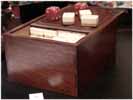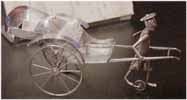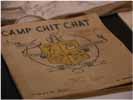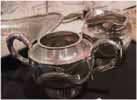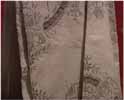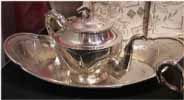|
October 2001 - August 2002 |
 |
|
|
| The treatment of Sephardi Jews by the
Japanese was different to that of the European refugees.
Sephardis holding American or British passports were forced to wear red armbands marked “A” or “B”. In April 1942 they were interned in camps with other enemy aliens and military prisoners. Several prominent families escaped Shanghai, the Sassoons leaving for Britain and the Kadoories for India. Other members of this community were allowed to continue normal life, although Jews from Iraq and Burma had to wear an armband bearing an “X”. Despite occasional interference, many businesses flourished, as long as anti-black market regulations were not flouted. Charitable contributions for refugee relief were maintained. Synagogue services were regularly held and the Jewish School operated unhindered. Religious festivals were celebrated though restricted by curfew hours and blackouts. Little changed for Russian Jews despite food shortages and rising antisemitism of local White Russian fascists. Japan, wanting to avoid confrontation with the USSR, did not interfere with those holding Soviet papers. Russian Jewish enterprises continued as usual, although a number found their British or American associates replaced by Japanese. Leisure time revolved around the Zionist movements, the Shanghai Jewish Club or the Soviet Club (where news from Europe was available). There were concerts, ballet, theatre and art shows. Many Russian women belonged to aid groups, providing food and clothes to the refugees. Russian leaders were actively involved in trying to prevent Japanese compliance with the Nazis’ plans to exterminate the Jews of Shanghai. In August 1945, the USSR declared war on Japan and for one week the local Soviet Russians were enemies. The first sign the War had ended was the sound of Russians singing the “Internationale” in the streets – a memorable moment for all residents of Shanghai. |
| Object:
Lender: Date: Notes: |
Chinese
Jacket Green, N 1948 Silk Belonging to Nikki Green's great aunt, Giuditta Crespi in Shanghai |
No image
available
|
| Object: Lender: Notes: |
Mahjong
set Doff, R & Y Wood;ivory |
|
| Object: Lender: Date: Notes: |
Resident certificate Bard, L c1944 Paper With Chinese characters & photo of Leo Bard |
|
| Object: Lender: Notes: |
Rickshaw model Doff, R & Y Silver From Shanghai |
|
| Object: Lender: Date: Notes: |
Rosewood sculpture and base Rivkin, H c1940 Rosewood Base for malachite sculpture |
|
| Object: Lender: Notes:: |
Russian samovar Indyk, L Silver |
|
| Object: Lender: Notes: |
Camp chit chat booklet Oystragh, P Paper Produced in Pootung internment camp, Shanghai; with cartoons |
|
| Object: Lender: Notes: |
Milk jug and Sugar bowl Moalem, D Silver |
|
| Object: Lender: Notes: |
Regulations of the Pootung Civil Assembly
Centre Oystragh, P Paper Was Australian and fought with the Hong Forces against the Japanese |
No image
available
|
| Object: Lender: Notes: |
Shabbat tablecloth Moalem, D Linen & lace Made in Chinese-European style with floral motiffs |
|
| Object: Lender: Notes: |
Silver tray and Tea pot Moalem, D Silver Made from melted Mexican silver coins |
|
|
|
|
|
|
|
|
|
